This is a question that has eluded motorists, traffic engineers, and urban designers for decades. A chicken perversely desiring the other side of a road is something most traffic planners feel unprepared to cope with, and many escape the conundrum by ignoring the phenomenon altogether, hoping the problem will sort itself out with a little help from natural selection.
 Chicken crossing a road for unknown reason in Amsterdam-Noord, NL
Chicken crossing a road for unknown reason in Amsterdam-Noord, NL
Of those who are willing to consider the problem of chickens and roads, most are perplexed by it, while several go so far as to resent the fact that so many chickens keep lustfully ogling the other side. They claim this is simply fowl play and that it should not be tolerated. Some planners and motorists egg each other on to the point that a few end up deciding that the glaring statistical predictability of regular road crossings by chickens demonstrates a deeply embedded and fantastically irritating innate flaw that spans the entire species.
Chickens, on the other hand, feel cooped up, complaining that they are perpetually separated by impossibly wide and often multi-lane roads from the food, grit, scratch, bedding, and other basic necessities they need to lead healthy and satisfying lives.
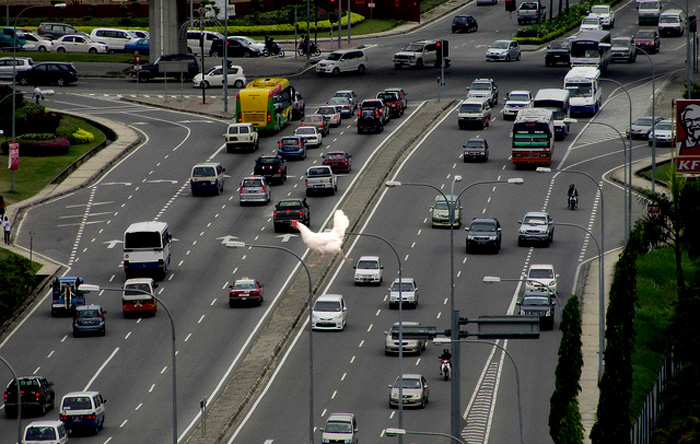
WTF? How on earth am I meant to get over there from here?
(Photo adapted from one taken by thienzieyung)
Engineers and planners might be wise to consider a different question:
Which came first? The chicken or the road? (or, indeed, the chicken or the traffic engineer?)
Like a child drawing a chalk line through an ant hill and expecting the ants to keep themselves to one side or the other, planners regularly slap multi lane highways straight through the middle of long-established villages and then watch in amazement, brooding and clucking as not only chickens, but all manner of other personalities flock to the new highways in droves, seemingly unable ever to finally decide which side of the road they want to be on.
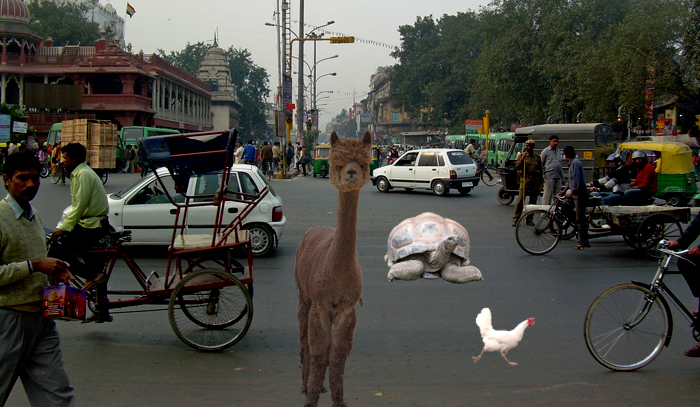 Photo adapted from one taken by mckaysavage
Photo adapted from one taken by mckaysavage
It’s no secret traffic engineers’ lives would be a lot easier if chickens would just keep to whichever block they were on when the roads were installed, straying from it only while donning the clever disguise of an automobile.
However, the reality is that there will always be some chickens who are too young, too old, too drunk, too sick, too disabled, too good looking, or just too near to their destinations to wrap themselves in a motorcar for the simple purpose of getting over there from here.
As a result, traffic engineers are sometimes henpecked into installing specific areas where they will allow chickens to cross.
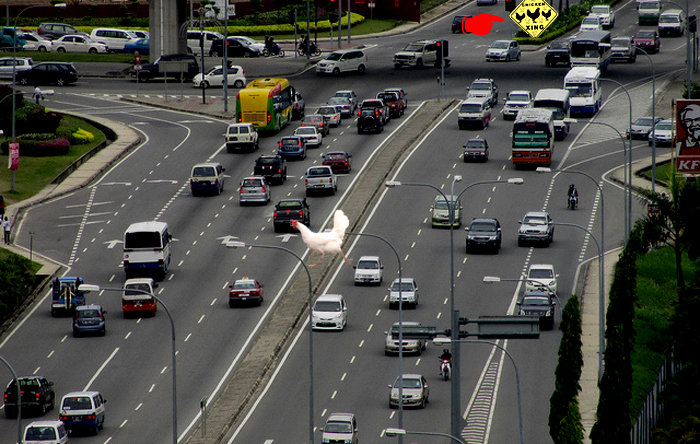
WTF? How on earth am I meant to get to the chicken crossing from here?
(Photo adapted from one taken by thienzieyung and another taken by 4nitsirk)
These designated chicken crossing areas inspire great comfort and confidence for those road users who are not chickens, but they have a couple of drawbacks for those who are:
- Instead of being located where chickens generally want to cross the road, they are more often than not deployed in whatever places will minimize inconvenience for motorists.
- They don’t even necessarily increase a chicken’s safety while crossing the road, and in fact, they can sometimes actually decrease a chicken’s chances of reaching the other side without being rerouted along a lengthy detour through the chicken E.R.
Surely there must be some benefit chickens can derive from going out of their way to use the crossing zones. For example, if they do get knocked down by a motorist while in the zone, surely they can expect the police to find in their favor and reprimand the motorist at the very least for weakening the effectiveness of the zone.
Well, no, actually. A wise person might think that, but I’m afraid that wise person would be, more often than not, quite wrong.
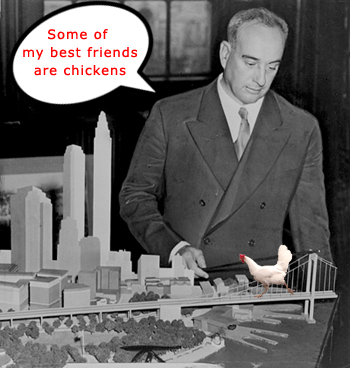
Robert Moses totally didn’t know his chicken.
(Photo adapted from Wikimedia Commons)
There are a few urban designers, however, who not only have an understanding of chickens and roads but also dedicate themselves tirelessly to spreading the word and, whenever and wherever possible, changing the experience of chickens vis-à-vis roads for the better. One shining example is Jan Gehl, an architect and urban design consultant from Denmark. He gives lectures and works with urban planners and engineers all over the world to increase awareness and understanding of the unique needs of chickens, especially when it comes to roads. Thanks to him and his colleagues at Gehl Architects, many cities, such as Copenhagen, Denmark, and Melbourne, Australia, have made great strides in accommodating chickens.

Lars Gemzøe of Gehl Architects knows his chicken.
(Photo adapted from one taken by max_katz)
Plucky young chickens can now opt to relocate, in hopes of a better life, to one of the few cities which have decided to start taking chickens seriously, but so far all of the best cities for chickens are located outside of the United States. Chickens in the U.S. dream of a day when they won’t have to sail across the ocean just to have a stroll on the other side of the road.
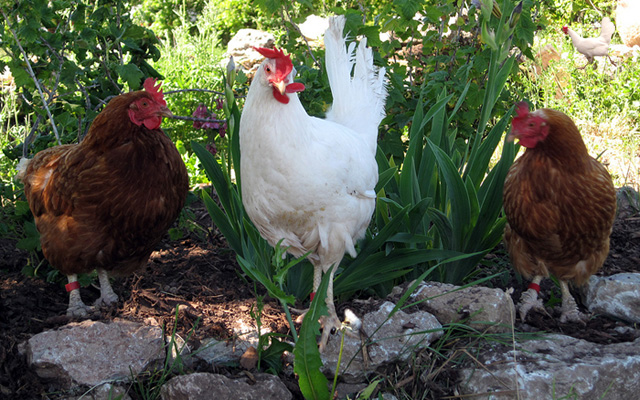
Do you know your chicken?
Unless otherwise noted, all photos used in this post are licensed as part of the Creative Commons

Eggcellent post, finally somebody is looking at things from the chicken POV. I like that in one of the pictures the (very large) chicken seems to be fleeing a KFC establishment, the “colonel” staring confidently on with that ominous smile.
Ride and run and cross safe little chicken!
i know my chicken.. you’ve got to know your chicken.
nice start to your blog.
Be the Chicken.
Luckily, however, chickens can shit wherever they like in Denmark… and you can win prizes when they do: http://www.youtube.com/watch?v=cFrzYenTnzE
Ha! It’s like chicken-shit bingo! Pure brilliance.
Yours is a very familiar name to me. I’m honored you read my humble blog post. 🙂
Love it! Can’t wait for the next story you hatch!
Just across the great waters of the Bay of St. Francis, the City of Alameda is home to many happy chickens in a flock of backyard coops. We even offer an annual Tour de Coop:
http://www.eastbayexpress.com/ebx/the-tour-de-coop/Content?oid=3192068
Just have your chickens hop on the ferry or the AC Transit “O” bus and come on over….
Ha. And a chicken coop bicycle tour too! How delightfully awkward. I’m sorry I missed it. Years ago, I went on a few of my own self-guided tours of the Bay Farm Island bird sanctuary. It’s one of my favorite places in the Bay Area to ride.
SVBC organized a Tour de Coop as well – I missed it because I was out of town, but there’s always next year. http://bikesiliconvalley.org/event/2741
Like the blog. Hope you post more.
Pingback: Cyclelicious » Chickens and road design